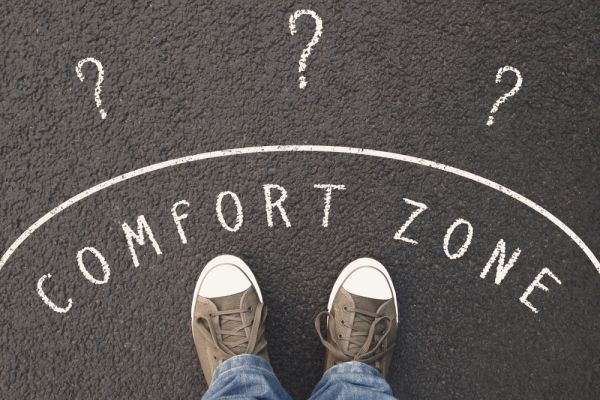Types of Anxiety
Anxiety is a significant feature of mental health conditions besides generalized anxiety disorder, marked by a state of persistent worry and apprehension. Perhaps most prominently, anxiety is a component of PTSD and obsessive-compulsive disorder. But exactly what should be considered the distinguishing feature or underlying malfunction in those disorders is a matter of intense scientific debate, and for that reason, and until more is known about the neurobiology of mental states, neither of those conditions is now formally classified as an anxiety disorder, although they are often referred to as such.
Experts generally recognize six major types of anxiety: generalized anxiety disorder, social anxiety disorder, separation anxiety, panic, and phobias, further distinguishing agoraphobia as an anxiety disorder in its own right. Because of the array of symptoms, the multiplicity of triggers, and the involvement of fear responses and the stress response system, there are many lenses through which clinicians and researchers look at and treat runaway anxiety.
On This Page
- How many types of anxiety are there?
- What are phobias?
- How do phobias differ from generalized anxiety disorder?
- What causes panic disorder?
- What is social anxiety disorder?
- How does social anxiety differ from generalized anxiety?
- What is separation anxiety?
- What is hypochondria, or health anxiety?
- What other disorders are related to anxiety?
There are officially six types of anxiety disorder, all related in some way to activation of the fear system, vigilance in anticipation of some kind of future threat or bad outcome, and behavior marked by caution or avoidance. They differ in terms of what gives rise to the fear or behavioral response. And while stress may trigger any one of them, the anxiety lasts far longer and exceeds the actual danger posed—a fact that provides the rationale for one of the most successful treatments for anxiety, cognitive and behavioral therapy. Human imagination provides the capacity to mentally magnify threats; it’s almost as if we talk ourselves into worry. People who suffer from one anxiety disorder tend to suffer from at least one other.
Phobias are fears of specific objects (snakes, dogs) or situations (flying, being in high places), and the fear, almost always immediate rather than future-oriented, can be so intense as to induce a panic attack. While some phobias seem almost wired into the human species (snakes, heights) and some develop in response to a bad experience, many have no specific cause. Many experts regard phobias as our evolutionary heritage, a legacy of adaptations that enabled our ancestors to survive under less hospitable conditions in the past. Agoraphobia is a specific phobia involving fear of escape or inability to get help and it usually focuses on being in open spaces such as bridges, enclosed places such as theaters or elevators, crowded places such as markets or concerts, or being outside the home alone. People with agoraphobia get highly distressed when they find themselves in such situations and usually go out of their way to avoid them.
Generalized anxiety disorder tends to be just that—generalized. There is concern related to one of the major domains of life and the cognitive load of worry is out of proportion to the likelihood of any bad outcomes imagined to lie ahead. Phobias generally have a very circumscribed focus. There is also an important mental difference: The fear in phobias is quite immediate; it does not reflect a prolonged state of apprehension, although it is out of proportion to the degree of actual risk posed. Phobias tend to focus on specific objects or situations and cluster in several distinctive categories: animals (snakes and spiders lead the pack of feared animals), natural environments (heights, thunderstorms), and injury (blood, injections).
Panic attacks are short—rarely lasting more than a few minutes—intense bursts of anxiety, and what they lack in duration they make up in distress. You feel you are about to die—and your body furnishes proof: Your heart is pounding and you can’t get enough air. Heart attack! Your (mis)perception triggers even more anxiety, intensifying the panic. Almost anyone can have a panic attack; they often occur unpredictably, randomly, out of the blue. The loss of control is extremely disconcerting and compounds the sense of threat.. And the attacks can be so frequent or so incapacitating and generate so much fear of having another that they can bring active life to a near halt—the condition known as panic disorder.
It’s not clear what triggers panic attacks. Much research has focused on the conjunction of a malfunction in brain circuitry of emotion with one or another physiological trigger—a metabolic or inflammatory signal gone awry or heightened sensitivity to some physiologic condition. Nevertheless, panic disorder responds to treatment with behavioral therapy. Making an immediate attempt to lengthen the duration of exhalation may activate the parasympathetic nervous system and set in motion a calming reflex.
Humans are social creatures, wired to thrive on approval and acceptance by others. In our evolutionary past, our very survival as individuals hinged on group inclusion: sensitivity to negative social judgment offered a survival advantage. People may naturally differ in how much fear of negative social judgment they have, and some people may become especially socially anxious only under specific circumstances, such as when they know they are being scrutinized. Early adverse experience may have set the system to be enduringly hypersensitive to criticism or disapproval of others or people may misread social cues and perceive threats of rejection where they don’t exist, resulting in social anxiety disorder.
Those with the condition typically avoid situations in which they will be exposed to the scrutiny of others, such as giving a speech or eating in front of others. They may fear meeting new people or engaging in group conversations. Social anxiety disorder constricts people’s opportunities in and enjoyment of life.
Studies show that people with generalized anxiety disorder and those with social anxiety disorder share heightened sensitivity to negative feedback and learn more under such conditions. But the similarities may end there. Generalized anxiety disorder can encompass any worry in any of the major domains of life—health, finances, work.
Social anxiety disorder reflects a specific worry—negative judgment by others—and it is manifest only in social settings. Scientists now know that optimism and anxiety are related. It’s long been known that most people are inherently biased toward an optimistic outlook in life. But recent studies show that this bias does not exist among those with generalized anxiety. In contrast, people with social anxiety do retain a general optimism.
Most young children develop anxiety about being separated from parents or caregivers. It’s a normal developmental stage, and, beginning around nine months of age, the type and degree of distress that children show on separation from caregivers is typically used as a measure of the security of attachment and adaptation to a world of strangers. But the anxiety on separation that is appropriate at age 1 is less adaptive at age 10.
Separation anxiety disorder exists when children show more than a developmentally appropriate degree of distress on separation from home or attachment figures, and it develops in about four percent of children under the age of 12. It can show up as persistent worry about being lost or kidnapped and never seeing their parents again, or about a parent dying. Children with separation anxiety disorder often refuse to go to school, and they can be clingy. A bout of separation can occur during any period of significant stress during childhood, but it can be especially severe after parental divorce.
What was formerly referred to as hypochondria, or hypochondriasis, has been refined into two separate conditions that involve physical expression of psychological suffering but only one of which is seen as aligned with anxiety disorders. Illness Anxiety Disorder encompasses people who have a level of general health anxiety high enough to cause psychological distress and impairment but not manifesting in specific somatic symptoms. By contrast, Somatic Symptom and Related Disorder refers to those people who present with somatic symptoms accompanied by psychological distress and preoccupation with those symptoms. Both versions of hypochondria tend to present themselves far more in medical settings than in mental health settings.
Both post-traumatic stress disorder and obsessive-compulsive disorder are closely linked to anxiety and, until recently, were classified an anxiety disorders. People with OCD engage compulsively in repetitive rituals (hand-washing, for example) and non-productive behaviors (say, constantly rearranging objects on a shelf) to as a way to disarm relentless anxiety-provoking thoughts (“Am I sexually deviant?”). Brain imaging studies highlight malfunction of a specific neural circuit that both overalerts to danger and misreads signals of safety. The ritual is meant to restore a sense of safety.
PTSD involves malfunction in other neural nodes in circuits of fear and safety. Like OCD, PTSD is characterized by a misreading of danger signals; it is, however, typically generated by a highly stressful situation threatening bodily danger. Months and even years later the memory of that event is so vividly triggered by non-threatening experiences it dictates safety measures that are wildly out of place and overwhelm everyday activities. Like some anxiety disorders, such as phobias, PTSD may respond to treatment involving exposure to the fear-triggering stimulus.














